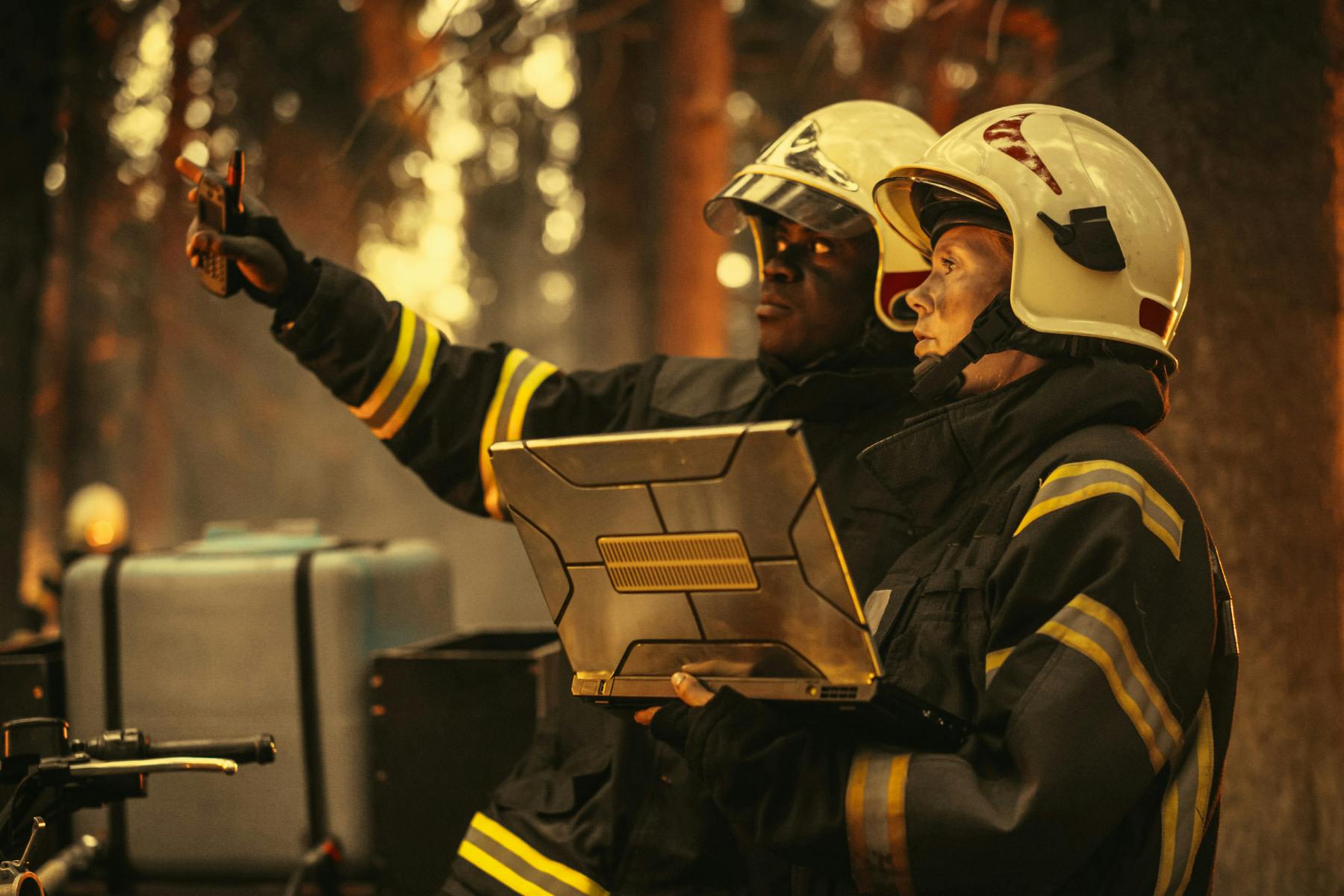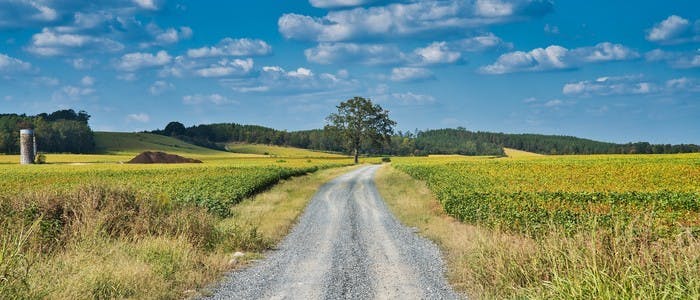Heat Illness Prevention and Wildfire Smoke Protection
By Mo Preston | Published June 2, 2022

It's getting hot outside. Summer is here, and so is the heat! It is important to remember that temperatures are rising daily, and we need to be prepared when working outside.
Heat illness is a common hazard for employees in industries that work outdoors, such as agriculture, construction, custodial, oil and gas extraction, transportation and logistics, maintenance, landscaping, and schools. Heat illness can also occur indoors with exposure to radiant heat e.g., ovens and furnaces. Heat illness can be life-threatening, so it is important to remember to drink plenty of water, get in the shade, and rest when necessary. Don't wait until it's too late.
California employers are required to comply with Cal-OSHA's Heat Illness Prevention standard. The standard requires employers to create a written plan which includes the following elements:
Effective Communication
Two-way communication with employees is a fundamental part of heat illness prevention. Employees need to be able to alert their supervisor in the case of an emergency or make alterations to the workplace based on new conditions. Employers should ensure that effective communication methods such as cell phones, radios, or other devices are in place. The standard also requires supervisors to regularly check in with their employees to ensure they are doing well. During hot weather, supervisors need to increase the frequency of these communications. Supervisors should be trained on when, how, and why they need to communicate during the work shift with employees. Employees should also be trained to report to their supervisors if they feel any discomfort during the shift.
Everyone reacts differently to heat illness with varying symptoms. Employees must report any early symptoms such as headaches and nausea to their supervisor because these symptoms are not easily identifiable by others. If heat illness is not treated right away, it could lead to more severe health effects. Employees should also be comfortable communicating to their supervisor that they need a short 5-minute rest period if needed. If the employee feels better, they can return to their regular duties. If the employee does not feel better, they may need to seek medical attention, and a supervisor should be informed.
Weather Monitoring
Cal-OSHA requires employers to monitor the weather conditions both before the start of work and throughout the day. Particular attention should be given to forecasts over 80 degrees. Employers should also have a way of telling the temperature at their worksite with a thermometer or other site-specific device. Cal-OSHA also recommends that supervisors check the weather at least once per hour.
Drinking Water
The Cal-OSHA standard requires employers to supply one quart per employee per hour for their entire work shift. The water needs to be fresh, suitably cool, and provided free of charge. Water must be as close as practicable to the employee's work location. If the supply is not from a drinking fountain, clean cups must also be provided. Plans must also be in place to ensure the water supply is maintained throughout the day. Supervisors should make it a standard practice to encourage the drinking of water by employees. They should also encourage employees to drink water instead of other drinks that contain sugar or caffeine.
Shade and Cooling
Cal/OSHA requires that even if temperatures do not exceed 80 degrees, employers must still provide shade, and it is helpful to have the shade erected if the weather is hot enough that the shade can help employees cool off. Shade must be easily accessible for employees, and its location must not deter or discourage access or use. The shade, whether natural or structural, must be as close as practicable to where employees are working, given the working conditions and layout of the worksite. Workers should not have to encounter any obstacles or hazardous or unreasonably unpleasant conditions to reach the shade or while resting in it. The shaded area must let employees assume a comfortable posture and must not cause exposure to other health or safety hazards. Shade requirements cannot be met by using areas underneath mobile equipment, like a tractor, or areas requiring employees to crouch to sit fully in the shade.
Employers must provide enough shade to accommodate all employees on breaks, at lunch, or during a preventative cool-down rest period. This does not mean that employers are required to provide enough shade to accommodate all the employees on the shift at the same time but for those employees who choose to remain in the general working area or areas designated for recovery and rest periods. Employers may, for example, rotate the breaks amongst employees. They may also erect additional structures on an as-needed basis.
Rest Periods
The employer is required to allow and encourage employees to take a cool-down rest in the shade for no less than five minutes when they feel the need to do so to protect themselves from overheating. It is crucial that workers not be rushed while taking the cool-down rest since the purpose of the cool-down rest in the shade is to reduce heat stress on the employee. By stopping physical work activities and replacing them with rest, the body has time to cool down and return to normal temperatures.
A rest break is not the same as a preventative cool-down rest period (CDRP). Cal/OSHA requires that employees be given a CDRP if they are suffering from heat illness or believe they need a CDRP. Regular rest breaks help cool the body to eliminate the need for a CDRP. They involve alternating normal work activities with regularly scheduled rest breaks.
Acclimatization
Acclimatization is a process by which the body adjusts to increased heat exposure. Acclimatization is fully achieved in most people within 4 to 14 days of regular work involving at least 2 hours per day in the heat. The body needs time to adapt when working in hotter environments. Employees are more likely to develop heat illness if they are not allowed or encouraged to take it easy when a heatwave strikes or when starting a job that newly exposes them to heat.
During heat waves, employers must be vigilant, especially with new employees who are not acclimatized. A supervisor must closely observe employees. Best practices include finding ways to lessen the intensity of employees' work during a heatwave and two-week break-in periods for new employees.
High Heat Procedures
During periods of high heat, employees must be monitored for early signs and symptoms of heat illness to help ensure that sick employees receive treatment immediately and progression to serious illness is arrested. If an employee suffers syncope (fainting), disorientation, loss of consciousness, or other symptoms of heat illness while working unobserved, initial medical treatment may be delayed, resulting in a serious or fatal illness. Employers may use different methods to monitor for heat illness. Whatever method is used, the employer must be able to ascertain the condition of employees at regular intervals and provide emergency services when an employee reports symptoms of heat illness or is unable to respond.
Emergency Response Procedures
Employers should evaluate whether the worksite is serviceable by the 911 system. If 911 is not available, such as in a remote or non-fixed location, the employer needs to establish a communication method to reach emergency responders. Emergency medical services must be provided as quickly as possible if an employee suffers from heat illness. The employer's procedures must include taking immediate steps to keep an employee cool and comfortable once emergency service responders have been called. The goal is to stop the rapid progression to more severe illnesses, including mental confusion, loss of consciousness, and seizures.
Employers must ensure that supervisors and employees are trained to recognize the signs and symptoms of heat illness, take immediate steps to prevent the progression of heat illness, provide basic first aid (such as cooling towels and shade), obtain emergency medical services, and not allow an employee with signs or symptoms of heat illness to be left alone or sent home without being offered onsite first aid or provided with emergency medical services.
Training
Employers must train all supervisory and nonsupervisory employees on the risk factors, signs and symptoms, prevention methods, and company heat illness prevention policies and procedures. Training must be provided before the beginning of work involving a risk of heat illness. Starting each work shift with a brief safety reminder about issues considered particularly relevant to the work to be performed that day is a great best practice. Training close to the hot season is more effective than training provided during colder seasons without follow-up refresher training.
Cal/OSHA requires all supervisors and employees to understand the training provided to be effective with the standard. Employers must ensure their work procedures are consistent with the information provided in training. Training must also be given in a language the employees understand.
Clothing and PPE
Employers need to train employees on appropriate Personal Protective Equipment and which clothes can contribute to heat illness for the particular jobs their employees will be performing. Inappropriate PPE can increase heat load on the body by trapping the heat and not allowing the body to cool. It is essential for employees wearing any PPE, which may cover the upper or lower body or face, not to work alone in warm or hot conditions and during high heat or a heatwave.
Appropriate PPE protects employees against the sun and other environmental risk factors and allows the body to cool, helping prevent heat Illness. Appropriate PPE consists of lightweight, loose-fitting clothing made of breathable fabric, which provides airflow and air movement aiding in cooling the body. Clothing should be light-colored to help reflect the heat, which is better than dark-colored clothing (which absorbs heat). Shirts with long sleeves are recommended to cover the body and avoid sunburn. Sunburns can affect the body's ability to cool itself and increase the loss of body fluids. Employees should also wear a wide-brim hat with fabric attached to shade the head, neck, face, and eyes when working outside. Any employees working near moving machinery should not wear loose-fitting clothes because of the danger of entanglement. Employees applying pesticides and wearing PPE must also follow all applicable regulations, including but not limited to T3 CCR 6724(b)(9), 6738(g).
Work Severity and Duration Evaluation
In warm or hot weather and during high heat or a heatwave, try to schedule slower-paced, less physically demanding work during the hot parts of the day and the heaviest work activities during the cooler parts of the day (early morning or evening). Split-up work shifts to avoid work during the hottest part of the day or start the work shift even earlier or later in the evening. Avoid overtime work, double shifts, and/or postpone non-essential work until a later time when it is cooler. Rotate employees through less physically demanding jobs and add extra personnel to reduce the exposure time for each employee. Make work shifts shorter or stop work altogether to help prevent heat illness.
For more information on heat illness prevention & training, visit: http://www.dir.ca.gov/dosh/HeatIllnessInfo.html
Cal-OSHA's Wildfire smoke protection standard
Cal/OSHA initially passed their wildfire smoke regulation in 2019 as an emergency standard. In February of 2021, the standard was made permanent. As we transition into our warmer season, we want to remind employers of their obligations to protect employees under this standard. The final regulation is found in Section 5141.1 of Title 8**. **It applies to workplaces where the AQI for PM 2.5 is 151 or greater or when wildfire smoke is reasonably anticipated. A good explanation of the Air Quality Index (AQI) can be found on the EPA's AirNow website education resources page. AirNow also has a comprehensive mapping site with air quality information. The standard does allow for a few exemptions, which include:
Enclosed buildings where the air is filtered by a mechanical ventilation system and the employer ensures that windows, doors, and other openings are kept closed when not in use
Enclosed vehicles in which air is filtered and doors and windows remain closed when not needed to exit the vehicle
On-site, monitoring demonstrates that concentrations of PM2.5 are less than the corresponding AQI of 151. Note: employers need to refer to Appendix A for proper measurements
Firefighters engaged in wildland firefighting
The standard requires identifying hazards, communication, training, and controlling harmful exposure to the smoke. Cal/OSHA has also published resources for protecting workers in wildfire regions.

Mo Preston
Senior Risk Control Consultant
Mo Preston a Senior Risk Consultant at Newfront. Mo works with a team of consultants who provide risk control and safety consulting services to clients designed to lower our clients’ total cost of risk. Newfront risk control consultants’ partner with clients to increase risk awareness and reduce occupational exposures by focusing on our client’s overall safety and risk management systems.
Connect with Mo on LinkedIn

